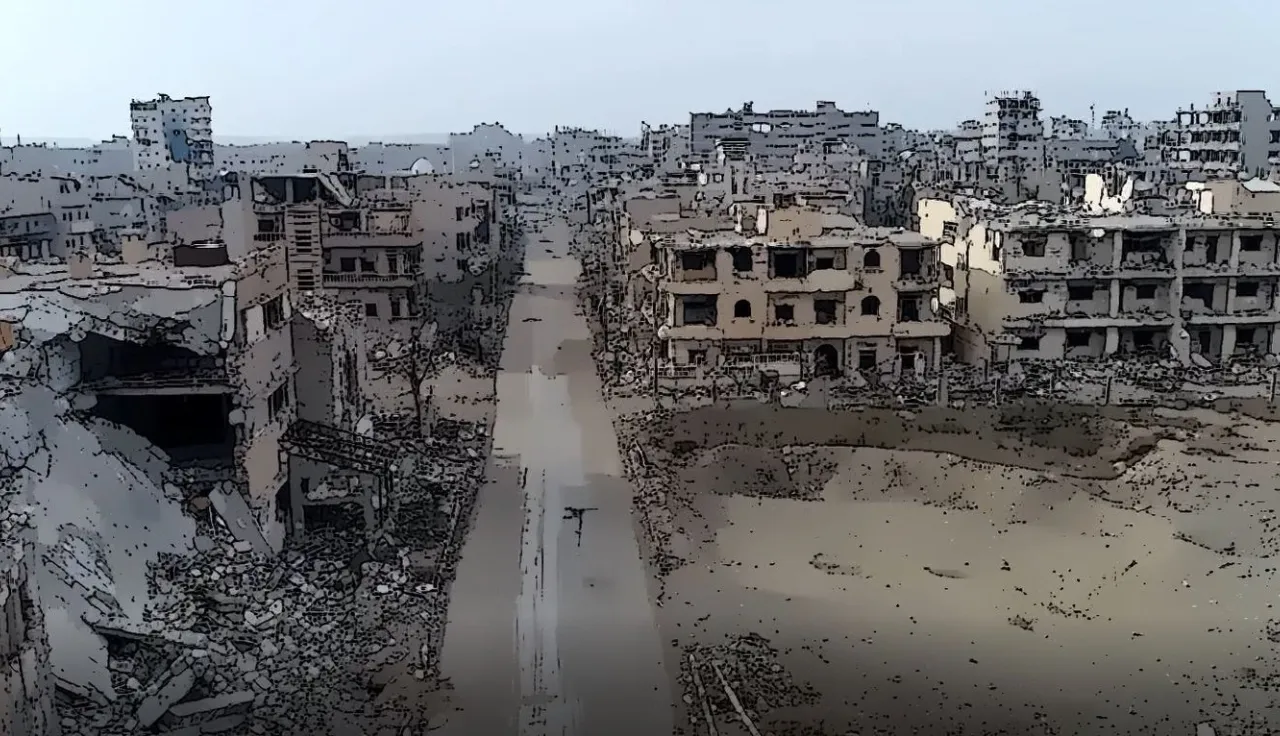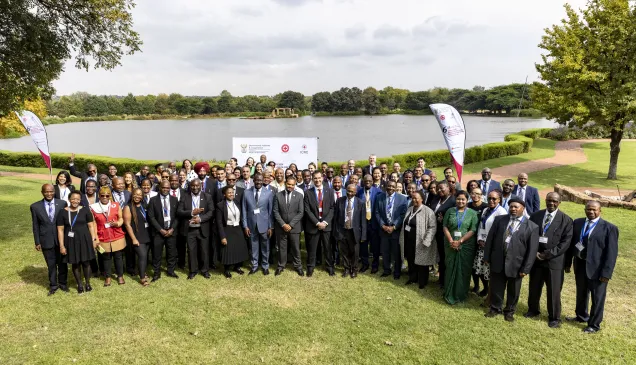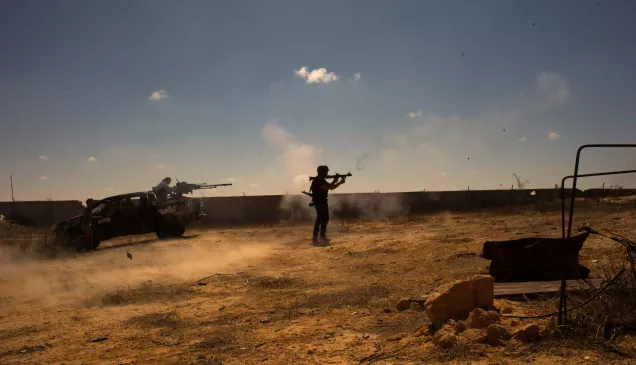Never again: Why the ICRC wants nuclear weapons eliminated and how the nuclear ban treaty can help the world get there

A few seconds was all it took for an atomic bomb to wipe out thousands of lives in Hiroshima, Japan in 1945.
The ICRC's Dr Marcel Junod was the first foreign doctor to reach Hiroshima to treat some of the victims after the 6 August attack.
One mile from the bomb's epicentre,
everything had been torn apart, blasted and swept away as if by a supernatural power; houses and trees had disappeared,
he wrote.
The level of devastation prompted the ICRC to make its first call for the abolition of nuclear weapons in September 1945, a call taken up by the broader Red Cross and Red Crescent Movement in 1948.
In January 2021, the Treaty on the Prohibition of Nuclear Weapons (TPNW) entered into force as the first instrument of international humanitarian law to prohibit nuclear weapons and to attempt to mitigate the catastrophic consequences of using and testing nuclear weapons by requiring States that suffered a nuclear explosion to provide medical care for victims on their territory and to take measures towards environmental remediation. From 21 to 23 June 2022, States party to the Treaty will meet for the first time in Vienna, Austria to agree on concrete actions to implement the obligations under the Treaty. 
Eirini Giorgou, a legal adviser with the ICRC, tells us about the status of the TPNW, and unpacks the ICRC's legal and policy position on nuclear weapons.
What is the TPNW and how can it help lead to a world free from nuclear weapons?
It is the first globally applicable multilateral agreement to comprehensively prohibit nuclear weapons, as a necessary first step towards their elimination. In parallel, it provides pathways for future measures to achieve nuclear disarmament and its verification. It is also the first to include provisions to help address the humanitarian consequences of nuclear weapon use and testing. The Treaty complements existing international agreements on nuclear weapons, in particular the Treaty on the Non-Proliferation of Nuclear Weapons, the Comprehensive Nuclear-Test-Ban Treaty and agreements establishing nuclear-weapon-free zones.
What is the relationship between the NPT and the TPNW?
In 1968, the Treaty on the Non-Proliferation of Nuclear Weapons (NPT) established an obligation to pursue multilateral negotiations on effective measures leading to nuclear disarmament. According to the International Court of Justice, this includes an obligation to bring such negotiations to a conclusion and to agree on nuclear disarmament measures. The TPNW constitutes an effective measure in the implementation of Article VI of the NPT.
Tell us more about the ICRC's role in the Treaty.
The ICRC first called for the abolition of nuclear weapons in September 1945, shortly after its delegates witnessed the catastrophic effects of the atomic bombing of Hiroshima, working alongside the Japanese Red Cross to assist tens of thousands of dying and wounded civilians. The horrific devastation and suffering it caused left a lasting mark on the ICRC and, together with the International Red Cross and Red Crescent Movement (Movement), have driven it to advocate strongly for nuclear weapons to be prohibited and eliminated for the last 77 years.
The ICRC is working actively with the Movement to promote the universalization of this crucial IHL instrument and the total elimination of nuclear weapons because of their inherent risks and catastrophic humanitarian consequences. The Treaty also provides a role for the ICRC and National Red Cross and Red Crescent Societies in helping victims of nuclear weapons use and testing. The universalization and effective implementation of the Treaty will benefit from a structured framework to be established for this purpose by the meeting of States Parties.
By January 2021, 51 States had signed the Treaty. Where do we stand today?
Today, we have 62 States that are party to the Treaty. Another 27 States have signed it. We encourage all States to join the Treaty without delay.
Could you shed some light on the ICRC's position on nuclear weapons?
The ICRC believes that in light of their catastrophic humanitarian consequences, it is extremely doubtful that nuclear weapons could ever be used in accordance with the principles and rules of international humanitarian law. We recently revised our position to reflect international developments in policy, medicine, science and law, including new evidence and data on the humanitarian impact of nuclear weapons on human health and on the environment, and the entry into force of the TPNW.
The ICRC's position on nuclear weapons can be summarised as follows:
- We continue to call for the non-use, the prohibition and the elimination of nuclear weapons, in view of their catastrophic humanitarian consequences. In the ICRC's view, this is a humanitarian and legal imperative.
- Pending their elimination, it is a humanitarian imperative to prevent any use of nuclear weapons, by taking urgent risk reduction and non-proliferation measures.
- We call on all States to adhere to and faithfully implement the TPNW.
- We call on all States to adhere to and faithfully implement other international agreements pertaining to nuclear disarmament, most notably the NPT, and to pursue negotiations for the elimination of nuclear weapons.
- It is extremely doubtful that nuclear weapons could ever be used in accordance with the principles and rules of IHL.
- Any use of nuclear weapons would be abhorrent to the principles of humanity and dictates of public conscience. Any threat to use nuclear weapons is equally abhorrent.
What does the ICRC expect from the upcoming meeting in Vienna?
The First Meeting of the States Parties is an important milestone for the success of the Treaty. It will establish a framework for the effective implementation and progressive universalisation of the TPNW, including by agreeing on concrete actions to provide assistance to victims of nuclear weapons use and testing and remediate the affected natural environment, as well as to increase the Treaty's membership and underscore the Treaty's significant added value within the broader nuclear disarmament and non-proliferation architecture.
The meeting should also send a strong signal that the TPNW is not an instrument that stands on its own. It is part of a broader framework comprised of different instruments related to nuclear disarmament – first and foremost the NPT – which the TPNW complements and reinforces.
We expect the meeting to establish a clear roadmap for the effective and timely implementation of the Treaty that strikes a balance between ambition and realism; to help debunk the resurfacing narrative on the value of nuclear deterrence and its perceived legitimacy; and to showcase clearly that the TPNW can have a real impact and take us one significant step closer to a world free from nuclear weapons.



